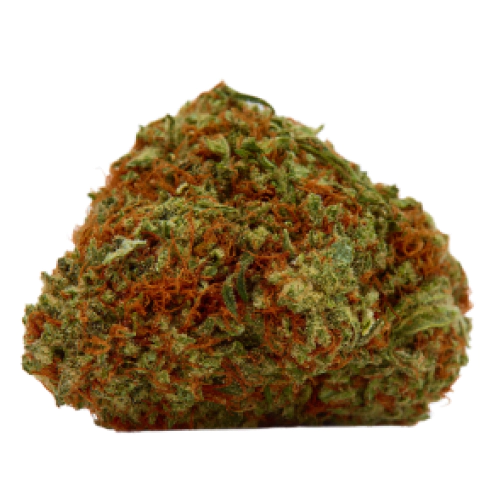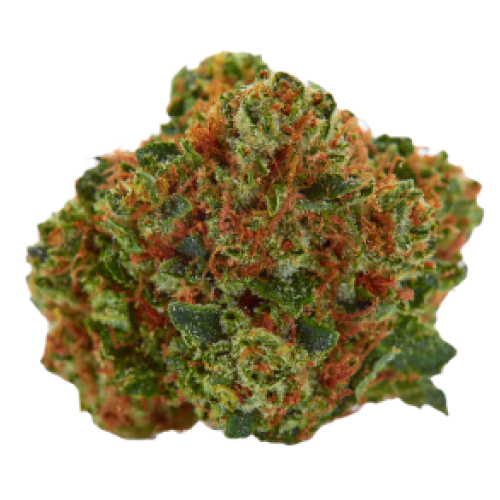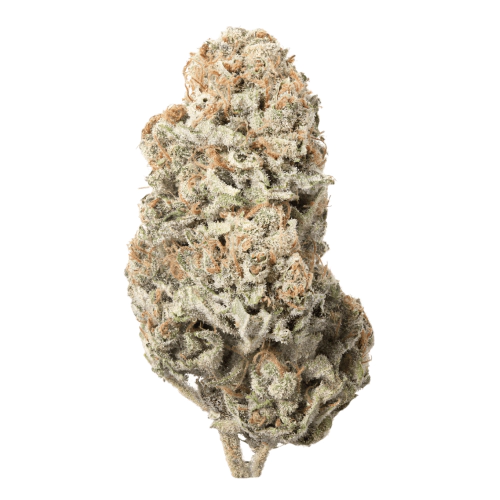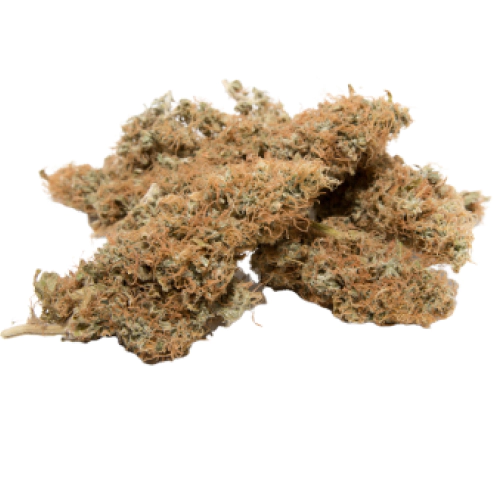THC 19.5 - 24.5%
CBD 0.12 - 0.09%
Effect Concentrated
Flavor Apple
12.05 - 16.81%
0.02 - 0.29%
0.31 - 0.74%
Tea, Berry
Tingly
Hell’s Bells is a typical combination of both Sativa and Indica. The strain suits consumers who prefer weeds with average amounts of THC. The volume of THC in Hell’s Bells varies from 12.05% to 16.81%, whereas the percentage of CBD compounds rarely reaches the 0.29% mark. The total terpenes content is 1%. It includes the following components:
The flavor profile of any strain depends on the percentage of terpenes. In the case of the Hell’s Bells strain, pulegone is a dominant component, which makes tea tastes dominant for this weed. 0.21% of limonene provides a lemon taste that is often combined with the smells of berries.
Every consumer of any strain may experience side effects. This usually happens when the user has a poor experience or takes inappropriate doses. Hell’s Bells isn’t a very strong strain, that’s why its side effects are common for other weeds:
Despite its upbeat naming, Hell’s Bells isn’t quite an energizing strain. It provides sleepy and sedative effects, so we don’t recommend taking it at a rock n’ roll party. It better suits when you need to relax in calm conditions. If you have problems with getting asleep, the strain might be useful as well.
Surprisingly, it doesn’t take long to grow this marijuana. Its flowering time is 45-47 days, and you can harvest it after 52 days of having it planted. The yield for this cannabis strain isn’t impressive even for outdoor planting - 5–10 Oz/plant (~ 300 g/plant).
| THC | Tetrahydrocannabinol, or THC, is a major cannabis chemical compound. It is a psychoactive element that stimulates dopamine release and induces euphoria or happiness. THC-rich strains may be helpful with such conditions as lack of appetite, chronic pains , etc. It is considered to be the primary active marijuana component. | 12.05 - 16.81% |
| CBD | Cannabidiol, or CBD, is a major compound in cannabis, which is non-psychoactive. It is also proved to counteract the side effects of the second major component THC. CBD is widely used for medicinal purposes in rubs, oils and so on. It is helpful in muscle pain cases, may treat arthritis and migraines. Even Greeks used it against pain, while Queen Victoria applied it to get rid of menstrual cramps. | 0.02 - 0.29% |
| CBC | Cannabichromene, or CBC, is a minor cannabinoid, meaning that its quantity in cannabis is quite little. Though it has the same origin as CBD and THC, it is different in functions. Without any psychoactive effects, it is an efficient cannabis compound in combating acne and depression. CBC produces analgesic, antibacterial and anti-inflammatory effects. | 0.14 - 0.51% |
| CBG | Cannabigerol, or CBG, is one of the minor cannabis compounds in adult plants. On the other hand, young ones contain a lot of this antibacterial and anti-inflammatory component. During the growth, CBG is converted into different cannabinoids, mostly THC and CBD. The compound itself increases appetite and decreases eye pressure. | 0.31 - 0.74% |
| CBN | Cannabinol, or CBN, is a trace element in cannabis that is considered to be mildly psychoactive. It appears from oxidation THC, exposed to light and heat. CBN is mostly contained in old cannabis and in traditional hashish. It is effective against insomnia, bacterial infections and appetite loss. | 0.51 - 0.18% |
| THCV | Tetrahydrocannabivarin, or THC-V, is a compound contained in cannabis in trace amounts. Even though it is close to THC molecularly, it is different in effects. This compound may be psychoactive only in large amounts. THC-V reduces blood sugar, controls appetite, stimulates bone growth, etc. African Sativa strains are the richest in THC-V. | 0.21 - 0.65% |
| Carene | Carene (also known as Delta-3 carene) is a terpene found in rosemary, lemons, pines, and cedars, offering citrusy and cypress aroma. Studies on mice showed that carene provides anti-inflammatory effects, as well as promotes bone health and chronic pain relief. | 0.24% |
| Limonene | Limonene (also known as d-limonene) is the second most common terpene in nature and the third most common terpene in cannabis. It has a powerful citrus aroma and can be found in all citruses, including lemons, oranges, grapefruits, limes, juniper, etc. Limonene is known to elevate moods and provide anxiety, depression, and stress relief. | 0.21% |
| Pulegone | Pulegone is a less-common terpene found in peppermint and catnip, for example, with a sweet and minty aroma. In small amounts, pulegone could be found in some cannabis strains. It is reported to offer anxiety-relieving effects, increased cognitive performance, and sedative properties. Could remove dizziness. | 0.31% |
| Phellandrene | Phellandrene (also known as alpha- and beta-phellandrene) is one of the rare terpenes found in cannabis with antihyperalgesic and antidepressive properties. Phellandrene contributes to a minty, woody, and mildly citrus aroma in cannabis. Previously confused with limonene and pinene, phellandrene was eventually distinguished as a separate terpene common for eucalyptus. Also, it could be found in mint, dill, black pepper, cinnamon, parsley, pine, and lavender. | 0.24% |
| Total terpenes content | 1.00% |
THC 19.5 - 24.5%
CBD 0.12 - 0.09%
Effect Concentrated
Flavor Apple
THC 9.5 - 12%
CBD 0.01 - 0.5%
Effect Uplifted
Flavor Sage

THC 7.53 - 8.87%
CBD 9.24 - 9.49%
Effect Relaxed
Flavor Earthy
THC 4.5 - 5.75%
CBD 0.01 - 0.17%
Effect Concentrated
Flavor Apple
THC 25 - 29%
CBD 0.6 - 0.77%
Effect Sleepy
Flavor Diesel
THC 15 - 18%
CBD 0.22 - 0.76%
Effect Hungry
Flavor Lemon

THC 24 - 26%
CBD 0.58 - 0.61%
Effect Giggly
Flavor Flowery
THC 14.5 - 20%
CBD 0.06 - 0.33%
Effect Concentrated
Flavor Spicyherbal
THC 12.75 - 13.5%
CBD 4.47 - 6.07%
Effect Giggly
Flavor Citrus
THC 14.25 - 17.75%
CBD 0.4 - 0.91%
Effect Happy
Flavor Apple
THC 9.5 - 12.5%
CBD 0.06 - 0.16%
Effect Talkative
Flavor Nutty

THC 16.5 - 19.5%
CBD 0.79 - 0.97%
Effect Uplifted
Flavor Sweet

THC 19 - 21%
CBD 0.33 - 0.62%
Effect Sleepy
Flavor Blueberry
THC 18 - 25.5%
CBD 0.73 - 1.16%
Effect Talkative
Flavor Spicyherbal
THC 19 - 20%
CBD 1.15 - 1.27%
Effect Aroused
Flavor Tobacco
Be the first and share your opinion
Write a Review